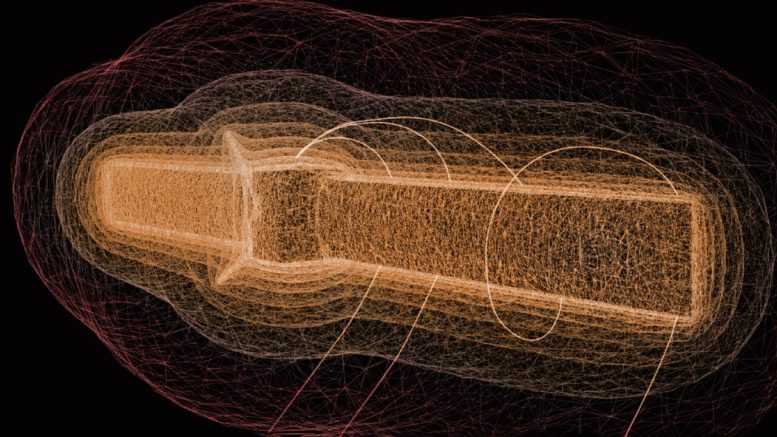
Rosetta data show unexpected inward ion flows at comet 67P, offering fresh perspectives on solar wind interactions.
Sofia Bergman, Swedish Institute of Space Physics (IRF) and Umeå University, defended her doctoral thesis on low-energy ions around comet 67P/Churyumov-Gerasimenko on November 26, 2021. Observing low energy ions is notoriously difficult because their properties are affected greatly by the spacecraft which observes them. Sofia has developed new methods to do this. Using her work, scientists can study low-energy ions around comets and in a variety of other places in the Solar System.
Comets have an environment of plasma which contains a large number of ions with low energies. It is necessary to understand these low-energy ions’ properties in order to understand the physical processes occurring around the comet.
As low-energy ions are difficult to measure Sofia Bergman devised a new method to analyze measurements of these ions around comet 67P/Churyumov-Gerasimenko in her thesis.
“A spacecraft interacts with its environment, which leads to an accumulation of charge on the surface of the spacecraft. This is problematic for the measurements of low-energy ions, since the ions are affected by the spacecraft before they are detected, changing both their energy and travel direction. We want to know the original properties of the ions, before they were affected by the spacecraft, which is now possible with the method that I have developed in my thesis,” Sofia Bergman explains.
Rosetta’s ICA Reveals Inward Ion Flows
In the thesis, data from IRF’s ion mass spectrometer ICA (Ion Composition Analyzer) on board Rosetta have been analyzed. ICA can measure the energy and travel direction of ions with very low energies, but because of the influence of the spacecraft potential on the measurements the low-energy data from ICA have previously been difficult to interpret.
“For the first time, we have now been able to determine the flow directions of low-energy ions observed by ICA at comet 67P/Churyumov-Gerasimenko,” Sofia Bergman says. “The results were surprising. We see a large amount of ions flowing inward towards the comet nucleus, instead of outward as we had expected.”
Comets are interesting to study when we want to understand how the solar wind is interacting with different bodies in the Solar System. The comets’ elliptical orbits cause the environment around them to change dramatically. As the distance from the comet to the Sun changes, we can observe how a magnetosphere is being formed around the comet. Low-energy ions are important for this interaction and not only at comets:
“The method that I have developed in my thesis can also be used to study low-energy ions around other bodies in the Solar System. The analysis of such ions has previously been very limited due to the difficulties of interpreting the measurements,” says Sofia Bergman.
Sofia Bergman was born and raised in Borlänge, Sweden.
Never miss a breakthrough: Join the SciTechDaily newsletter.
1 Comment
“A spacecraft interacts with its environment, which leads to an accumulation of charge on the surface of the spacecraft.” What applies to spacecraft, applies to comets as well.
As a comet hurtles toward the center of the solar system, it is constantly encountering more and more charged particles. This would cause an ever increasing accumulation of charge on the comet.
It’s great to see a scientist paying attention to the charge on a comet and what role(s) it plays in the physical processes occurring around the comet. Hopefully her work won’t be put on the back shelf with the others that were shedding light on the electical nature of cometary bodies.
The tails of comets are most likely an electrical phenomenom and not due to ice. The scientific community has long resisted the notion that comet tails are related to electric charge; choosing instead to continue pressing the notion that warming from the sun causes ice to turn to water vapor, creating the tail. Even when they are still so far out that they are a hundred or more degrees below the freezing point of water.
The electrical nature of comets and their tails will gain more acceptance with knowledge from studies like this one.